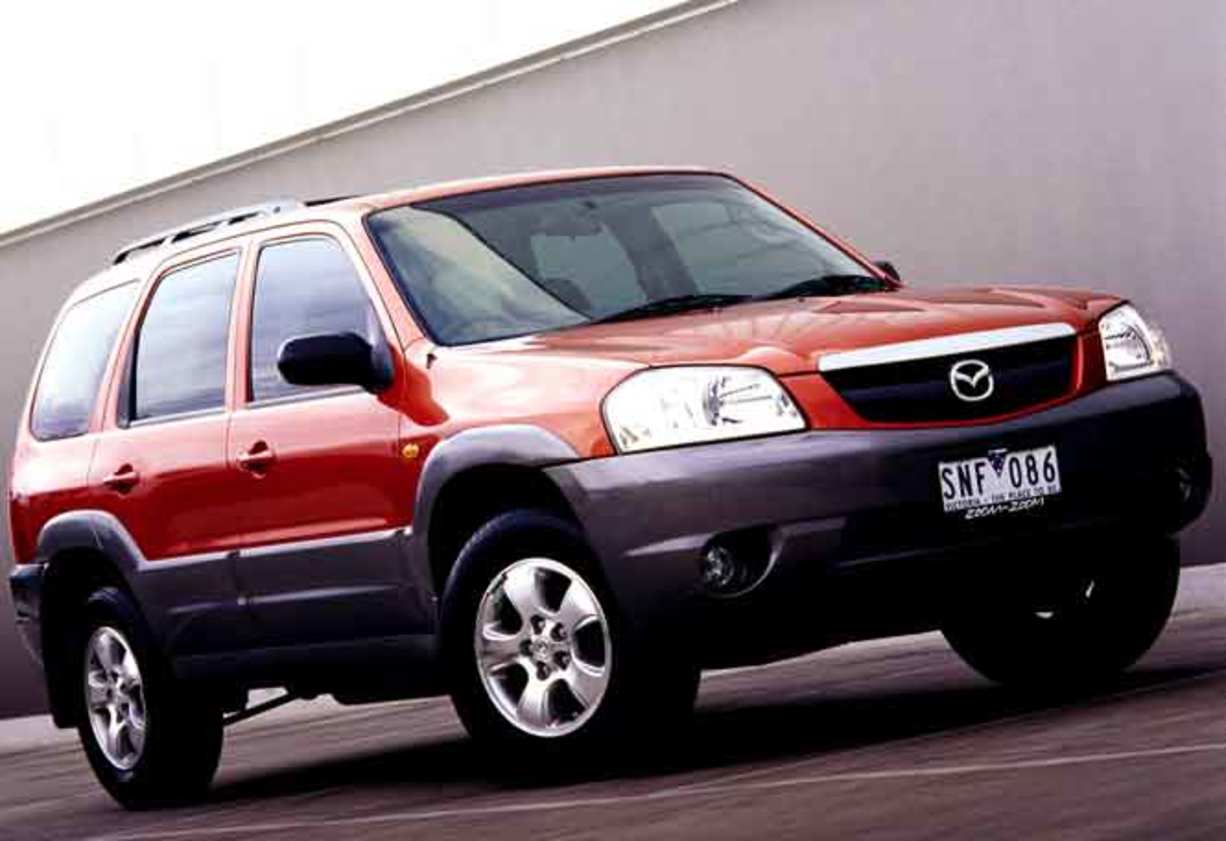The Mazda Tribute is really is an all-wheel drive wagon with an intelligent all-wheel drive system and reasonable ground clearance that will capably handle some pretty rough conditions. But, in essence, it's an urban wagon conceived for family transport rather than belting around the bush.
MODEL WATCH
The Tribute fits into the compact SUV class, a medium-sized wagon that delivers quite roomy and comfortable accommodation for a family of five along with the gear they need to carry. Its high ride height provides a broad view of the road, and its safety benefits are one of the appealing features of this type of vehicle.
The Mazda's four-wheel drive system, better described as all-wheel drive, is an on-demand system, which is biased towards the front wheels in normal use but sends drive to the rear wheels when it senses the front wheels slipping.
For off-road use there's a dash-mounted switch that activates a coupling that locks the system in four-wheel drive with the torque split 50:50 front and rear. The system, along with generous ground clearance and approach and departure angles, gives the Tribute the capacity to go quite a long way off the black top.
Power was delivered by either a 2.0-litre double overhead camshaft, 16-valve four-cylinder engine or a 3.0-litre double overhead camshaft, 24-valve V6. Running at its peak, the four-cylinder produced 97kW at 5400rpm, while the V6 boasted 149kW at its 6000rpm peak.
Tribute buyers had the choice of a five-speed manual gearbox or four-speed auto, and all had the on-demand all-wheel drive system. Under the skin, the Tribute had a combination of MacPherson Strut front suspension and multilink rear, along with power-assisted rack-and-pinion steering, giving it good road manners and a comfortable ride.
Mazda offered the Tribute in four models, the Limited 2.0 and 3.0 models, and the Classic and Luxury 3.0 versions. The Limited 2.0 got the four-cylinder engine and manual gearbox, along with steel wheels, tilt steering wheel, velour trim, 60/40 split-fold rear seat, airconditioning, power windows, remote central locking, CD sound, driver and passenger airbags and immobiliser.
When you stepped up to the 3.0 you got the V6 engine and auto trans, and ABS. If you went for the Classic 3.0 you also got alloy wheels, sunroof, roof rails and cruise, but tick the Luxury 3.0 box and you drove away with leather and rear side airbags.
IN THE SHOP
Mazda build quality means there's not a lot that goes wrong with the Tribute. Because they're mostly used for family transport they tend to suffer from high traffic so look for wear on trim, floor coverings and seat belts, and look for damage caused by youngsters playing up. Look for a service record for a level of confidence that the previous owner has taken care of the car.
CRUNCH TIME
Dual front airbags across the range provide good crash protection in the front seat, with standard side airbags adding protection for rear seat passengers in the Luxury 3.0.
OWNER'S VIEW
Ashley Manning drove a 2003 Tribute Luxury 3.0 for 2 1/2 years and covered 52,000km. He says it was largely trouble free apart from two small warranty claims for the sunroof switch and a small coolant leak.
The engine was very good, if thirsty, averaging 12.9L/100km. When starting hot or cold, the engine would rev very high.
MAZDA TRIBUTE 2001-2003
V6 engine is thirsty on fuel
Look for marks and stains inside
Quite capable off-road
Check underneath for signs of off-road damage
Resale slipping with fuel prices putting buyers off
Roomy and comfortable interior
Good road view from high vantage point
RATING
14/20 Well built compact all-wheel drive wagon with the road manners that will see it at home in town and out.
Mazda Tribute 2001: Classic
| Engine Type | V6, 3.0L |
|---|---|
| Fuel Type | Unleaded Petrol |
| Fuel Efficiency | 13.0L/100km (combined) |
| Seating | 5 |
| Price From | $3,740 - $5,500 |







.jpg)

.jpg)







.png)








.jpg)


.jpg)